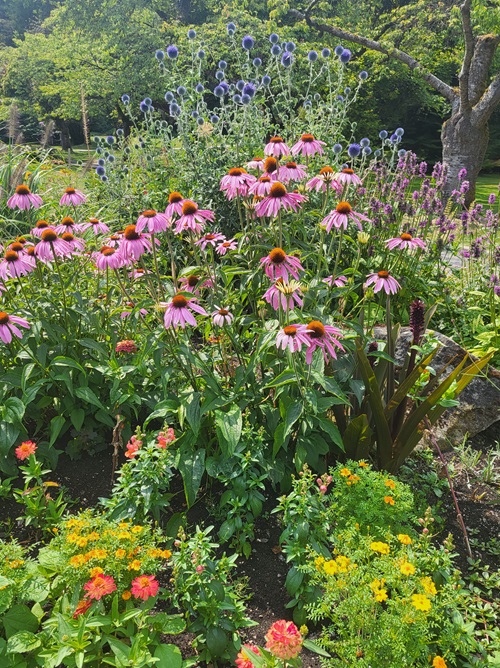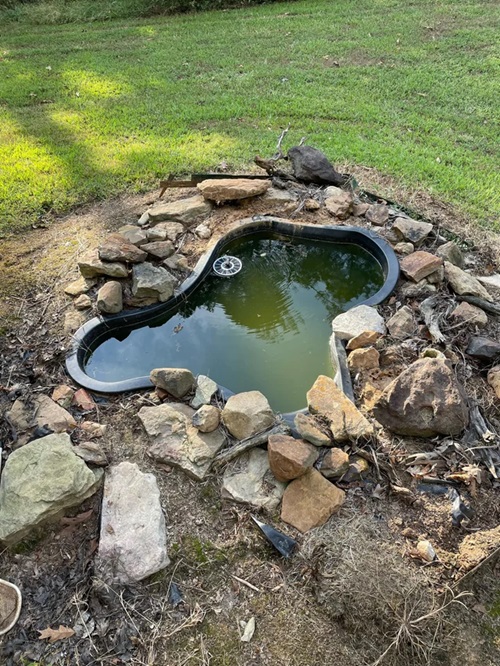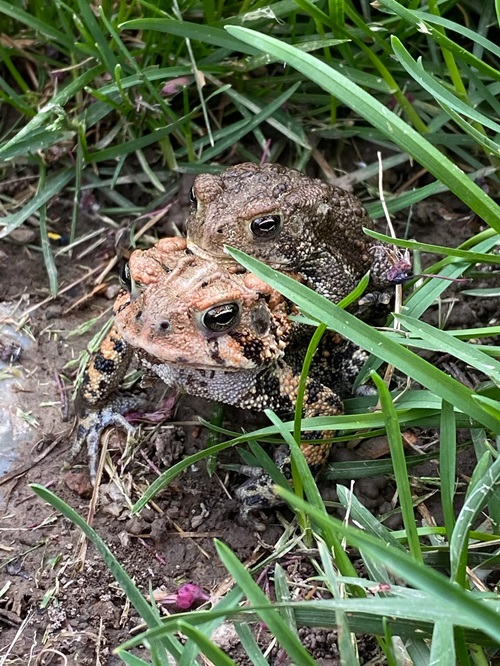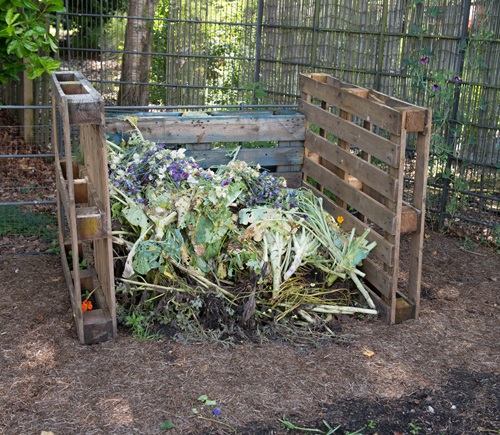Follow these simple Tips to Create a Hibernation Friendly Garden that supports wildlife with food sources and shelter!
Want a garden that supports wildlife and pollinators even in the colder months? Then you need to create a hibernation-friendly garden. This will help you transform your garden into a comfortable habitat for these beneficial insects.
Tips to Create a Hibernation-Friendly Garden
1. Select the Right Plants
Let’s start with the basics. The right plants provide both food and shelter for wildlife, so they’re a must. Native trees and shrubs like oak, maple, and sumac provide food (acorns, seeds, etc.) and shelter for small animals, and you should definitely plant some, if not all, of these. Just search for evergreen local trees and bushes for winter interest and grow some of them.
You can also choose shrubs with berries, such as holly, juniper, and winterberry, which help birds and mammals in winter. Don’t skip the perennials and wildflowers; select plants like asters, coneflowers, and goldenrods to help attract bees and butterflies.
2. Use Compost to Your Benefit
Make a compost heap in your garden using kitchen waste. This is a great way to reduce landfill waste and create a home for small creatures.
The worms in it will help turn leaves and organic matter into compost. Spreading this compost in your garden will attract more worms and improve soil drainage.
3. Add A Few Water Features

A water feature, like a small pond, is excellent for amphibians like frogs and turtles. In winter, they burrow into the mud at the bottom of ponds to hibernate.
You can easily DIY one of these. Keep the water in the pond clean and chemical-free to protect wildlife.
4. Bird Feeders and Houses
Birdhouses and roosting boxes offer a cozy space for birds to shelter from cold winds and snow.
While some birds migrate south for the winter, others stay behind and seek food and shelter. Set up bird feeders with seeds, suet, and nuts to nourish them.
5. Let Things Stay As They Are

Cleaning up your garden thoroughly at the end of the growing season is irresistible, but leaving some areas intact is vital for wildlife. You should leave some parts unmown, such as long grasses, which are good spots for butterflies and fireflies to lay eggs. They also provide shelter by creating microclimate in stalks.
Fallen leaves, dead plants, and overgrown corners create natural hiding places for hibernating insects, reptiles, and small mammals. If you have a garden nook or corner filled with these, don’t clean it up.
6. Avoid Using Pesticides and Chemicals
The use of pesticides and chemical fertilizers can harm hibernating animals, especially insects.
Instead, opt for natural pest control methods, such as using insecticidal soap and neem oil, attracting insect-eating birds, or encouraging beneficial insects to prey on pests naturally.
7. Make a Woodpile and Leave the Leaf Litter
A great tip many people overlook to create a hibernation-friendly garden is to build a woodpile. If you have a large area or backyard, pile up a few pieces of wood.
Some creatures, like butterflies and wasps, use woodpiles to hide and hibernate during the cold months. You might also find slow worms, newts, frogs, toads, and many small critters sheltering between the logs.
Similarly, decaying leaves add nutrients to the soil, so leave the leaf litter for a lush garden in fall in at least one part of your yard. This natural mulch also protects plants from frost in winter, keeps moisture in during summer, and supports fungi that help plants get nutrients.
Common Hibernation-Friendly Species
Now that you know what to do with your garden to make it hibernation friendly, let’s look at the animals and insects you might find there.
1. Butterflies

Butterflies, such as the monarch and painted lady, are essential pollinators. During the winter months, many butterfly species go through a hibernation-like phase. They’re quite common and easy to invite to the garden.
2. Bees
Bees are also vital pollinators that contribute to ecosystems. In the U.S., several species of bees, including honeybees and native solitary bees, enter a form of hibernation during the winter. Best not to disturb their nest if you find it.
3. Hedgehogs
Though hedgehogs are not native to the U.S., some similar small mammals, like chipmunks, play a similar ecological role. Chipmunks and squirrels are common in many parts of the country and hibernate in burrows during the winter.
4. Ladybugs
Ladybugs feed on aphids and other pests that can harm plants. In winter, ladybugs enter a state of dormancy and seek out warm, sheltered places to cluster together.
5. Garter Snakes
Garter snakes are one of the most common non-venomous snake species in the U.S. and are beneficial for gardens because they eat tiny pests like slugs, insects, and rodents.
6. Frogs and Toads

Frogs and toads, like the American toad and the wood frog, are common in the U.S. They are beneficial because they eat insects and help to control garden pests. Why don’t you create a home for them?
7. Bats
Bats are incredibly valuable for pest control; some bat species in the U.S., like the little brown bat, enter hibernation in caves and hollow trees.
8. Salamanders
They hibernate within vegetation to survive the frosty weather. Salamanders control pests by eating insects such as mosquitoes.
9. Hermit Crabs
They hibernate when the temperature drops below 68 F (20 C). Hermit crabs are useful in your tank as they handle dead animals you can not find and also help reduce algae.
Benefits of a Hibernation-Friendly Garden
By now, you know which animals will come to a hibernation garden and how to attract them, but do you know the benefits? A garden that supports hibernation promotes wildlife to return in the warmer months and creates a dynamic area filled with beneficial creatures.
When you encourage the hibernation of species like frogs, bats, ladybugs, fireflies, and nonvenomous snakes, you reduce the need for chemical pesticides and make your garden more eco-friendly.
Many hibernating species are important in maintaining healthy ecosystems. Pollinators like bees and butterflies help plants reproduce, while animals like frogs, toads, and bats control pests naturally. Plus, animals like chipmunks and certain insects naturally aerate the soil and improve its quality. What’s not to like?
What are you waiting for? It is time to put these tips to good use and create a hibernation-friendly garden for yourself. Do share how it goes for you in the comments below.







